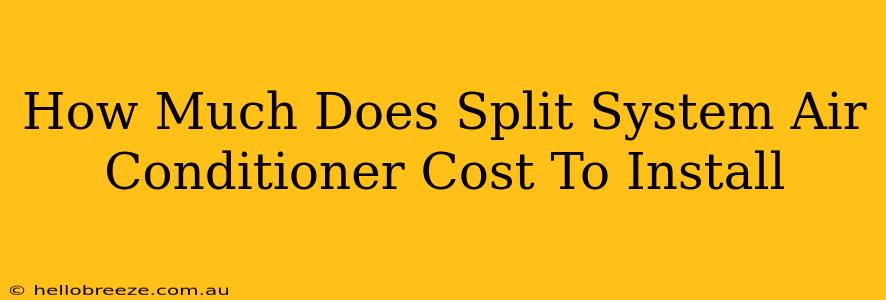Planning to beat the heat with a split system air conditioner? Understanding the installation costs is crucial before you commit. This comprehensive guide breaks down the price factors influencing your total expense, helping you budget effectively.
Factors Affecting Split System AC Installation Costs
Several factors contribute to the final cost of installing a split system air conditioner. These include:
1. The Size of Your System:
The capacity (measured in BTUs or kilowatts) directly impacts the cost. Larger units designed for bigger spaces naturally cost more than smaller ones. Consider the square footage of the room or area you need to cool and consult with an HVAC professional for proper sizing. Underestimating your needs can lead to inefficient cooling and higher running costs down the line. Overestimating may increase your initial investment unnecessarily.
2. The Type of System:
Different split systems come with varying features and technologies. Inverter systems, known for their energy efficiency, tend to be more expensive upfront, but the long-term energy savings can make them worthwhile. Features like smart home integration or advanced filtration will also add to the cost.
3. Installation Complexity:
This is a major cost driver. Simple installations where the indoor and outdoor units are relatively close together and require minimal electrical work will be cheaper. However, factors like:
- Distance between units: Longer distances necessitate more refrigerant piping and potentially additional electrical work, increasing labor costs.
- Wall type: Installing through brick or concrete requires more time and specialized tools than drywall.
- Electrical requirements: Upgrading your electrical panel or running new wiring adds significantly to the expense.
- Obstacles: Existing structures, trees, or other obstacles can make the installation more challenging and costly.
4. Location:
Your geographical location plays a role. Labor rates vary by region, and the cost of materials might fluctuate depending on supply chains and local taxes.
5. Permits and Inspections:
In many areas, permits are required for AC installations. These add to the overall expense. Inspections to ensure the installation meets local codes are also standard practice and factor into the final cost.
Typical Cost Ranges for Split System AC Installation
While providing an exact figure is impossible without specifics, here's a general idea:
- Basic installation: You might find some basic installations, involving smaller units and straightforward setups, starting around $1000 - $2000.
- Average installation: For most standard installations, including typical-sized units and moderate installation complexity, expect to pay in the range of $2000 - $5000.
- Complex installations: Challenging installations involving larger units, long distances between units, significant electrical work, or other complications can easily exceed $5000.
Getting Accurate Quotes:
To obtain the most accurate estimate for your specific needs, contact several reputable HVAC professionals in your area. Request detailed quotes that break down the costs of the unit, labor, materials, permits, and any other expenses. Compare quotes carefully, considering not just the price but also the company's reputation, warranties, and customer reviews.
Don't hesitate to ask questions! A transparent and knowledgeable installer will be happy to explain the cost breakdown and answer all your queries.
Remember, investing in a professionally installed split system AC ensures proper function, energy efficiency, and safety. While the upfront cost might seem significant, the long-term benefits of comfortable cooling and potential energy savings often outweigh the initial investment.

